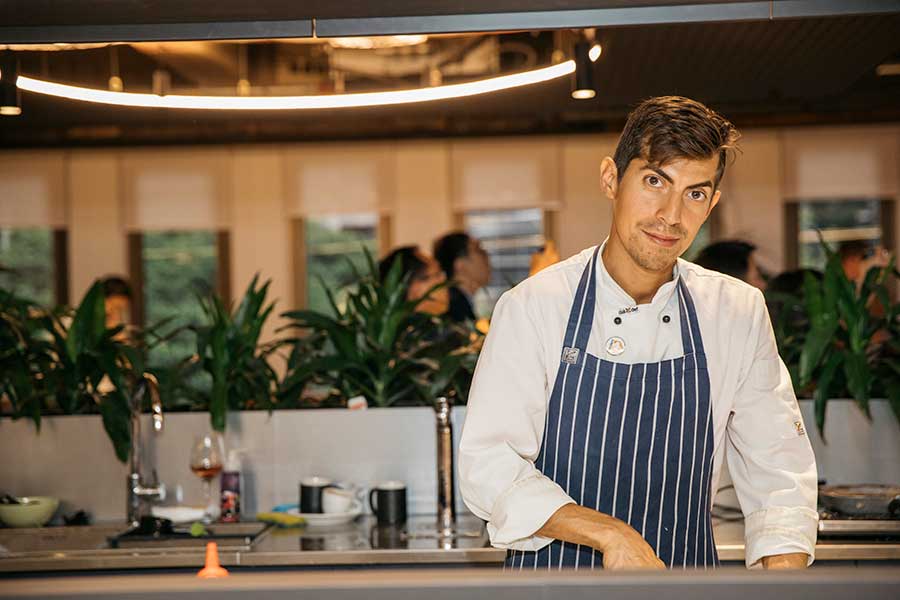The Ultimate Guide to Australian Cooking & Traditional Australian Food
Trying to define Australian cuisine isn’t always easy. Sure, we have meat pies, lamingtons, and pavlova, but there’s so much more to our cooking than that. While we don’t have a traditional dish or native ingredients that define our food, in recent years, we have started to forge a distinctly Aussie food culture, and it’s on the rise.
There is a growing interest in seeking Australian food recipes that highlight traditional cooking methods and flavours unique to Australia’s culinary identity.
The growing national interest in cooking and dining has put food in the spotlight, and with that, we’re starting to carve out our unique twist on cooking. Aussie chefs are taking inspiration from our colonial history and multiculturalism, fusing them with native ingredients and the unique culture we’ve forged as a nation. The result is food that’s distinctly Australian.
Influences on Australian cuisine
Indigenous Australians have lived in this country for thousands of years, eating on the land and our native flora and fauna. Still, when the British settlers arrived, they did little to learn about the eating habits and ingredients of Australia’s native people. They were completely oblivious to the plentiful foods Australia had to offer.
English seafarer William Dampier wrote in 1697, “The earth affords [Aboriginals] no food at all. There is neither herb, root, pulse nor any sort of grain for them to eat that we saw”. With no sign of ‘Australian’ foods to eat, the colonisers turned back to their British roots for cuisine, and native cooking took a backseat for a couple of hundred years.
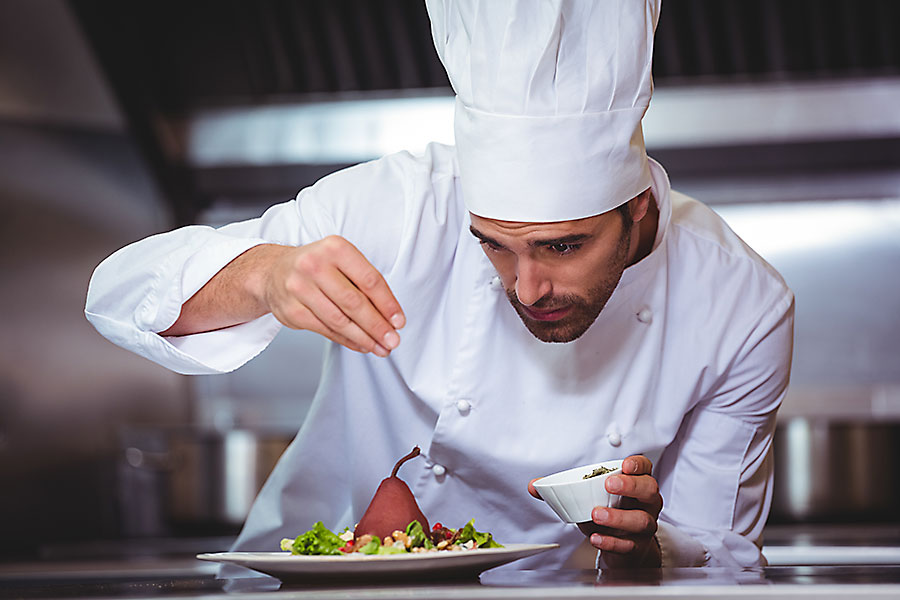
Fine Dining with A Private Chef
To understand Australian food, we must look at its history and evolution. Initially influenced by British and Irish cuisines, Australian food has also seen the adaptation of Aboriginal bush foods. The impact of multicultural migration has further diversified the culinary landscape, transitioning from traditional meat-and-vegetable meals to a diverse array of global cuisines. This transformation reflects societal changes and immigration patterns over time.
Recently, Aussie chefs have turned back to Indigenous bush tucker and native ingredients as inspiration. With a whole country’s worth of ingredients to discover, returning to using native ingredients and adopting Indigenous food practices is starting to help pin down a uniquely Australian cuisine. Until now, though, the influences on Australian cooking have come from all over the world.
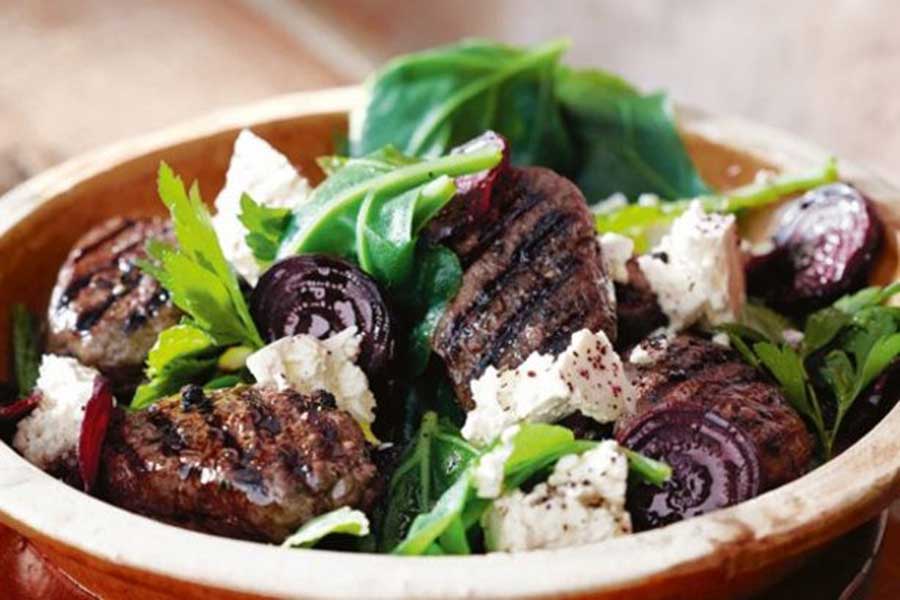
The British influence
When the British landed in 1788, they’d already considered Australia a barren land with nothing to offer in terms of food. So, they brought along their own traditional foods and ways of eating, forming the foundation of Australian cuisine. Back then, a typical diet consisted of bread, salted meat, oatmeal, cheese, dried peas, tea, and spirits. It was non-fussy British food that did the job but was not necessarily exciting.
During the early settlement period, labourers were given food rations of 4.5kg meat, 4.5kg flour, 1kg sugar, and 100g tea weekly. With these humble ingredients came the classically Aussie damper, eaten with a slab of meat and some billy tea brewed with a gum leaf. Humanitarian and social reformer Caroline Chisholm made the most of these rations and published a set of recipes with seven different ways of combining meat and flour. These foods were the first sign of uniquely Australian cuisine, carrying hints of a unique emerging culture.
As agriculture boomed within Australia, people had a wider range of ingredients to work with, and cooking became more popular. Aussie cookbooks were dedicated to using the few ingredients we had to create meals like shepherd’s pie, Irish stews, and roasts on a Sunday. Based on traditional British & Irish recipes, these foods became staples in most Australian homes. Today, we can thank the Brits and Irish for our love of the meat pie, a good cuppa, biccies, and the Sunday roast.
Typical Australian food, such as the iconic meat pie, holds significant cultural value and is widely popular. These dishes illustrate a blend of traditional British influences and contemporary culinary trends, showcasing the evolution of Australian cuisine.
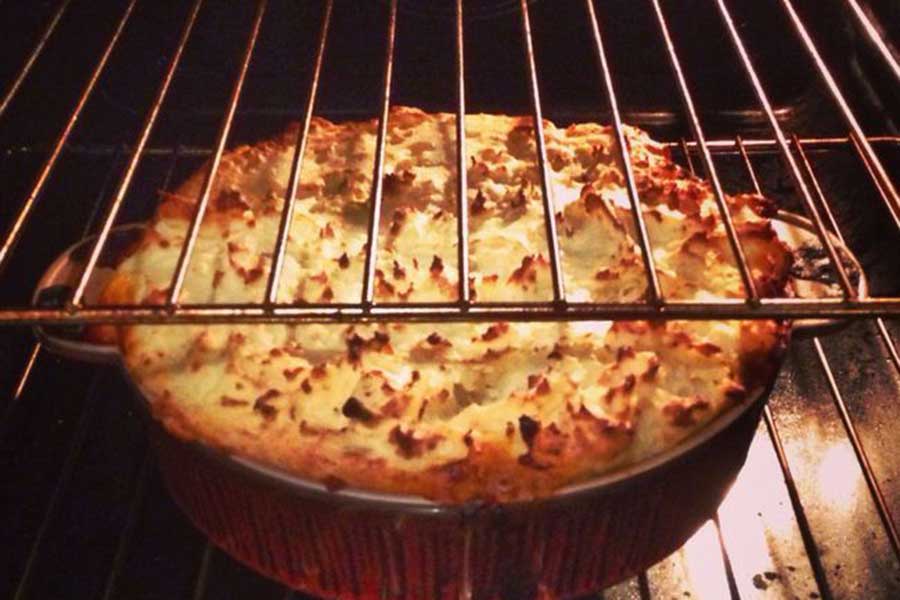
The migration influence
The real changes to Australian cooking came with its many migrants, introducing new ingredients and flavours to the nation. The Gold Rush of 1851 brought with it an influx of Chinese immigrants to the country. Today, there’s an undeniable Asian influence in modern Australian cooking, whether in restaurants or our homes. We can thank the Chinese for introducing Yum Cha and inspiring Melbourne’s dim sims, while the rest of Asia has the country obsessed with sushi trains, Thai food, and banh mi.

The post-war migration from Europe and the Mediterranean had an even larger influence on Australian cooking. The country became home to big communities of Greeks, Italians, Turks, and Lebanese, each of whom introduced their flavours and food culture to Australia. We discovered capsicums, garlic, eggplants, zucchinis, pastries, and pasta. We can thank these communities for Australia’s love of coffee, spag bol, good wine, hommus, and late-night kebab.
One notable example is the Chicken Parmigiana, a popular Australian pub classic. This dish features a chicken schnitzel topped with melted parmigiana cheese and an Italian-inspired tomato sauce. It has evolved from its Italian roots, where it originally used an eggplant base, to become a staple in Australian culinary culture.
Corporate catering with a private chef.
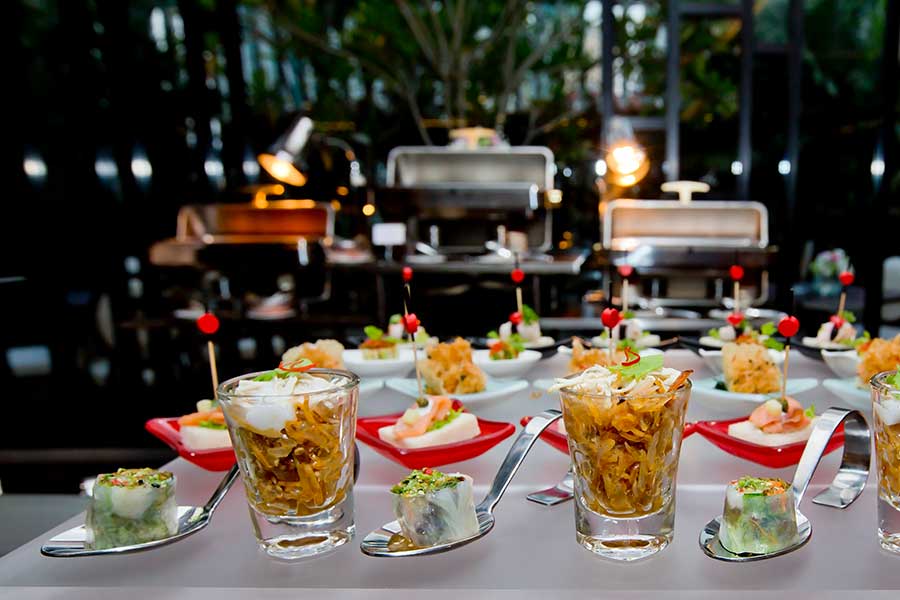
Continuous migration to Australia has made us one of the most multicultural nations in the world, and you can see that in our cooking. Our supermarkets are packed with diverse ingredients from every inch of the globe, and being so experimental, our country is open to trying new and different things. Modern Australian cooking is a melting pot of influences, flavours, traditions, and cooking techniques from around the world coming together on one plate.
The Aussie chef and cookbook influence
Australia’s multicultural communities may have introduced their native ingredients and dishes, but they didn’t just fall into popularity immediately. Aussie chefs and cookbooks helped spread the knowledge to households everywhere. Before Australian supermarkets blossomed into the wonderfully diverse stores we see today, it was hard to find things like lemongrass, coriander, and Greek yoghurt at your local. Cookbooks were crucial in spreading Australian food recipes, highlighting traditional cooking methods and flavours unique to Australia’s culinary identity.
People didn’t know what those ingredients were, let alone how to use them! And so began the cookbook revolution, led by daring Aussie chefs learning to use these new and different ingredients. Charmaine Solomon introduced Asian basics to the country, Margaret Fulton taught us all about eggplant and asparagus, and Maggie Beer, Donna Hay, and Stephanie Alexander played their part in defining Aussie cooking at home.

Native Australian ingredients
We’re just now starting to discover the wonderful world of new herbs, spices, fruits, vegetables, and grains available in our own backyard. The food Indigenous Australians have been eating for millennia before settlers arrived is finally making a comeback, and it’s filling the gap that was missing from traditional Australian cuisine this whole time. Embracing these native ingredients is essential to understanding and appreciating traditional Australian dishes.
7 delicious native Australian foods to get to know:
- Warrigal Greens
- Finger Lime
- Kakadu Plum
- Lemon Myrtle
- Quandong
- Sea parsley
- Snowberries
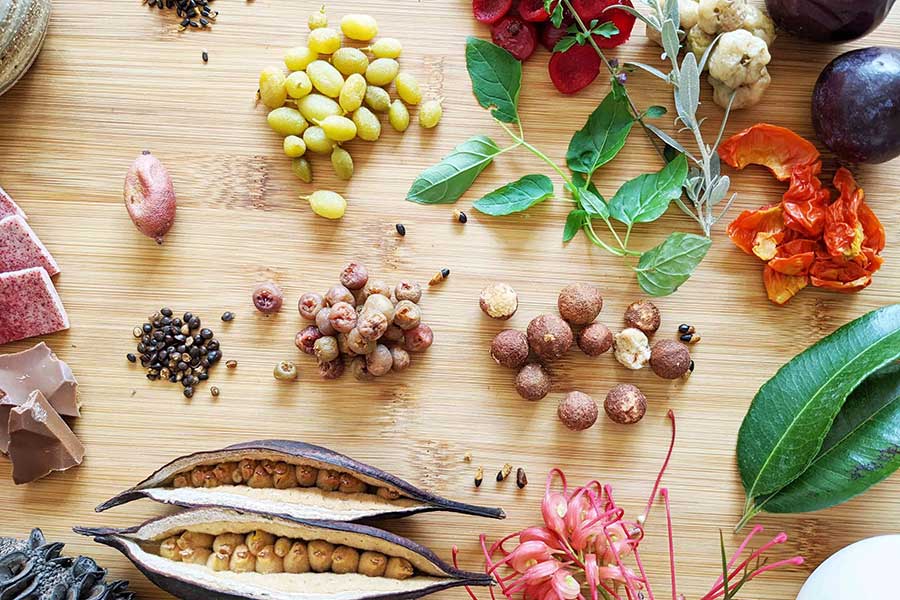
First, we started experimenting with kangaroos, emu, and crocodiles. It was wild, but we ever-so-brave Aussies gave it a red hot go. These meats are now more popular than ever, kickstarting the native ingredient revolution. Now, we’re seeing more and more native Australian ingredients used in restaurants. Chefs are introducing new flavours, fruits, and ingredients that exist right here in our backyard. It’s reshaping how we look at the country around us and how we view Australian cuisine.
World-renowned Noma chef Rene Redzepi recently hosted a pop-up restaurant in Sydney featuring a 12-course degustation made entirely from native Australian ingredients. He popularised a wide spectrum of flavours we never knew in this country, including Mat-rush, wattleseed, desert oak seeds, fermented kangaroo, lantana, sandpaper fig, bunya nut, green ants, and more.
Opening our eyes to a whole new world of ingredients available at our doorstep is exciting. If you thought you’d already experienced the full spectrum and flavours that food had to offer, there’s a whole new world waiting out there. With the turn to native ingredients in our cooking, we’re assembling the final pieces of the traditional Australian food puzzle.
Iconic Australian foods
We can’t write an article about traditional Australian food without mentioning the iconic foods that form a part of our culture. These foods are the backbone of our nation, the foods we grew up eating, our comfort foods, and foods that are exclusively ours.
There are no British or multicultural influences, just straight-up Aussie classics. Australian seafood also has a reputation for its quality and freshness. One such classic Australian food is the Prawn Cocktail, known for its unique preparation and presentation as a traditional dish since the 1970s.
We’ll start with vegemite, and next in line are the chicken shop snacks. You know the ones: Chiko rolls, dim sims, potato scallops. There’s nothing more Australian than the local chicken shop and all its deep-fried snacks, always sprinkled with a generous amount of chicken salt. Of course, you can’t forget the classic meat pie, sausage rolls, and beets in burgers. These are all part of the food of Australia, showcasing our culinary heritage.

Fine Dining with A Private Chef
And then there’s dessert! Lamingtons and pavlova, our beloved Anzac biccies, and Tim Tams. Golden Gaytimes and Zooper Doopers, corner shop lollies, and Killer Pythons. They might not be fancy, but they’re all classically Australian.
A cooking genius will know how to combine elements of these foods into something spectacular and undoubtedly Australian. A key component of Chicken Parmigiana, a beloved Australian pub classic, is the melted cheese combined with tomato sauce and chicken schnitzel.
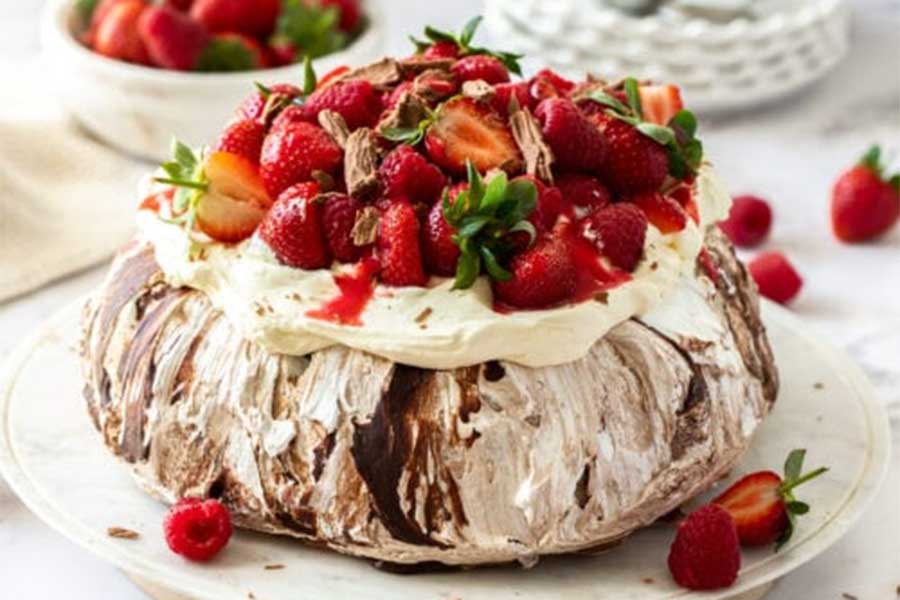
Pavlova, a popular meringue-based dessert from Australia and New Zealand, is typically decorated and served with whipped cream and fresh fruit. It is a festive treat often enjoyed during celebrations and special occasions.
Aussie eating traditions
A country’s food is defined by its culture, and we Aussies have a few eating traditions we’ve made. Famously laid back, we like to chill out and socialise with friends around a good meal. The sunny weather means Australians are free to eat outdoors, and combining all the above has helped define our Aussie eating traditions.
An example is the Anzac biscuit, which holds historical significance as it was created for soldiers during World War I. Wives made these biscuits to send to their loved ones serving in the Australian and New Zealand Army Corps, highlighting the cultural and emotional connections associated with both the biscuits and the military heritage.
The sausage sizzle
If you’re stuck describing Australian traditional food, you’ll likely go with BBQ or sausage sizzle. And the term sausage sizzle is all ours, so we’re using that. A sausage sizzle is the best food gathering for everywhere, from homes to schools, sports matches, the beach, markets, and Bunnings. There’s nothing so simple Australian than frying up some onions and snags, chucking them in some bread, and squeezing sauce all over the top.
Pub grub
The good weather and chilled attitude of our nation mean that pubs are just as good of an eating option as restaurants. And menus of pubs everywhere are filled with the same old classics that keep Aussies coming back. What’s more Aussie than kicking back in a beer garden with a chicken parmy topped with melted cheese, an Italian-inspired tomato sauce, and chicken schnitzel, or steak with mushroom sauce? Some salt and pepper calamari or a classic schnitty? Pub grub is hearty, heavy, and typically a throwback to the British influences on Aussie cooking (though that’s fast changing).
Aussie cafe culture
Head to any other country worldwide and notice a distinct absence: Aussie-style cafes. We’ve probably got Melbourne to thank for this, but Australian cafe culture has a particular vibe that sets it apart. You can head to a cafe to get just a coffee, a pastry, or an entire lunch meal, which makes Australian cafe culture so great. Best of all, cafe menus are constantly evolving thanks to talented chefs who aren’t afraid to experiment and be daring.
Australian cuisine is finding itself.
So, what is Australian cuisine? People have called it a blend of European technique and Asian/Mediterranean flavours, but it’s so much more than that. Regarding food, Australians have always been open to experimentation, adaptation, and innovation.
We’ve taken ingredients from around the world and combined them on a plate. We’ve fused that foundation of British cooking with techniques and flavours from other countries. And now, we combine all those elements with native foods from our backyard.
Traditional Australian food is the result of Australian history. It has a foundation of British cooking from the settlers, with Asian and European ingredients from migrants. There’s that cheeky throwback to our iconic foods of lamingtons, pavlovas, and meat pies – dishes that will continue to be reinterpreted repeatedly. And there’s the unique homage to native Australian ingredients on the rise, a testimony to our increasing recognition of Indigenous Australians.
Modern Australian cuisine is increasingly influenced by global flavours, illustrating a blend of traditional foods and contemporary culinary trends. Add great weather and an easy lifestyle, and you’ll have a recipe for distinctly Australian cuisine.
Want a taste of traditional Australian food? Our Taste of Australia degustation combines native and foraged ingredients to deliver an authentic Aussie food experience curated by an Australian Private Chef.
